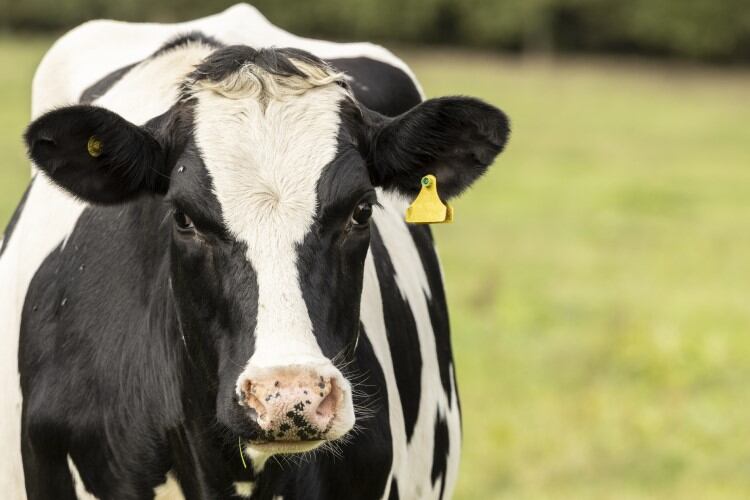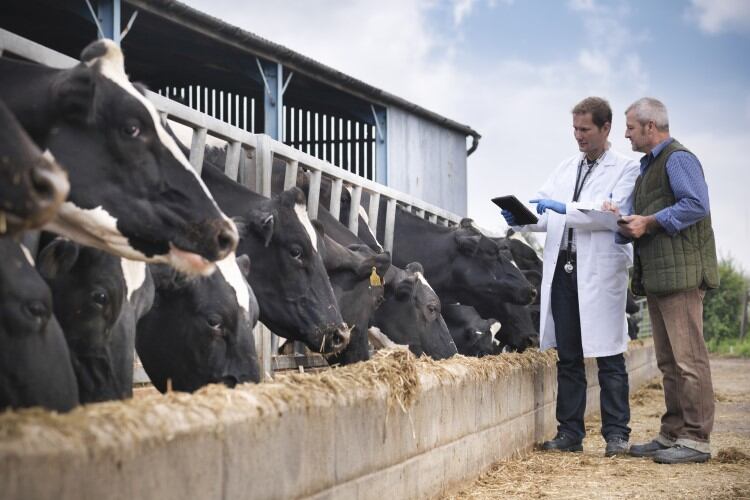The World Health Organization (WHO) chief scientist Dr. Jeremy Farrar urged US public health authorities to closely investigate how the virus spreads and be ready to respond if it starts to transmit ‘in different ways’.
Speaking from Geneva during WHO’s announcement of new measures to tackle airborne diseases last week, Dr. Farrar said: “H5N1 is an influenza infection, predominantly started in poultry and ducks and has spread effectively over the course of the last one or two years to become a global zoonotic – animal pandemic.
“The great concern, of course, is that in doing so and infecting ducks and chickens – but now increasingly mammals – that that virus now evolves and develops the ability to infect humans. And then critically, the ability to go from human-to-human transmission.”
So far, one human case and 28 cases of dairy cows with the virus have been reported across 8 US states since March 2024, when the first case emerged in Texas. Prior to this, no ruminants had ever been affected by bird flu in the US. A(H5N1), the current strain of the virus, has been circulating in the US since at least 2022 and had spread to other mammals such as racoons, skunks and foxes.
It now also affects older, mid-lactation dairy cows, causing them to produce thick, colostrum-like milk or dry off completely. Veterinarians have reported that affected farms had recorded around 20% milk loss, though the disease is not fatal and most cows recover with supportive care within several weeks. Cow-to-cow transmission has not been ruled out, and farmers have been told to isolate sick animals from the rest of the herd if they notice any symptoms.
Public health officials thought the initial spread was likely a spillover event from a nearby poultry farm, but farmers have been urged to increase their biosecurity measures as the authorities continue to investigate what leads to the spread.
Dairy farmers have been ordered to divert milk from sick cows but can sell milk from cows that don’t show symptoms. The virus is destroyed during pasteurization, making commercially-sold milk in the US safe for consumption.
US officials have said the virus hasn’t adapted better to spread to humans but finding out how and why it spreads among dairy cows should be priority, Dr. Farrar said, ‘because it may evolve into transmitting in different ways’.
“Do the milking structures of cows create aerosols? Is it the environment which they’re living in? Is it the transport system that is spreading this around the country?” he asked. “This is a huge concern and I think we have to…make sure that if H5N1 did come across to humans with human-to-human transmission that we were in a position to immediately respond with access equitably to vaccines, therapeutics and diagnostics.”
H5N1 vaccine not ‘where we need to be’
The Centers for Disease Control and Prevention (CDC) said that changes were identified in the sample collected from the infected dairy farm worker when compared to the virus that affects cattle - but those changes were ‘minor’ and not linked to increased transmission to mammals or a resistance to treatment, the federal agency said.
“The genome for the human isolate had one change…that is known to be associated with viral adaptation to mammalian hosts, and which has been detected before in people and other mammals infected with HPAI A(H5N1) virus and other avian influenza subtypes…,but with no evidence of onward spread among people,” the CDC said.
“Further, there are no markers known to be associated with influenza antiviral resistance found in the virus sequences from the patient’s specimen and the virus is very closely related to two existing HPAI A(H5N1) candidate vaccine viruses that are already available to manufacturers, and which could be used to make vaccine if needed.”
CDC added that due to the wide geographic spread of the virus and the increased likelihood of exposure for people, there could be an increase in so-called sporadic human infections from mammals and birds – but such infections would not currently change the agency’s risk assessment, which remains low for the general public.
But this could change if the virus starts spreading from person to person; increase its spread from animals to people, or evolves genetically to better spread to people.
US veterinarians now refer to the virus that affects dairy cows as bovine influenza A, to differentiate it from the disease that is highly pathogenic in birds.
Human-to-human transmission of H5N1 is yet to be recorded in the current outbreak in the US, but the WHO chief scientist is concerned because the H5N1 strain has had an ‘extremely high’ mortality rate among the several hundred people known to have ben infected with it to date, he said. From 2003 to 2024, 889 cases and 463 deaths caused by H5N1 have been reported worldwide from 23 countries, according to the WHO; this is a fatality rate of 52%.
On the potential H5N1 public health risk, Dr. Farrar cautioned that vaccine development was not ‘where we need to be’. Neither was it the case that regional offices and country offices and public health authorities around the world have the capability to diagnose H5N1, he noted.
Meanwhile, WHO announced several new terms to describe airborne pathogens in a bid to increase international cooperation in the event of a new pandemic. These include ‘infectious respiratory particles’, or IRPs, which should be used instead of ‘aerosols’ and ‘droplets’ to avoid confusion.
“It's a hugely important first step,” he said. “But next, we need to keep the disciplines, the experts together.
“We're using the same terminology, the same language and now we need to do the science that provides the evidence on tuberculosis, on COVID and other respiratory pathogens so that we know how to control those infections better than we have done in the past.”


